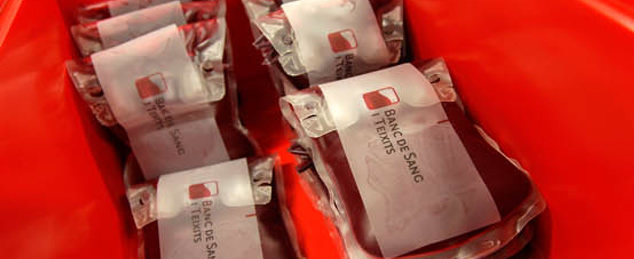Side Effects of Transfusions

What are transfusion side effects?
In general terms, a blood transfusion is a therapeutic process which aims to correct haematological deficiencies. However, it can provoke side effects in some cases: so-called transfusion reactions or adverse reactions, which describe any contrary effect or unexpected reaction caused by a blood product transfusion.
The entire process carried out by the blood banks is aimed at avoiding transfusion reactions. However, they do still happen. The reason is that in vitro tests are a poor reflection of what happens in vivo and things can happen during the transportation, storage and administering of blood which compromise the safety of the recipient.
It should be said that there is a range of transfusion reactions and their possible consequences are very wide, ranging from feeling slightly unwell to death.
When do they present?
Transfusion reactions may happen at any time during the blood transfusion process and also after it has finished. Depending on when they appear, side effects are classified as:
- immediate: taking place within 24 hours after the transfusion has been completed
- delayed: when there is a reaction after more than 24 hours following the transfusion
What are their causes?
The cause may be:
- immunological caused by a reaction with blood group antibodies
- non-immunological: when the immune system is not involved. The following may happen: bacterial contamination, mechanical destruction of erythrocytes by heat, etc.
Which blood components cause them?
A transfusion reaction can be caused by any of the blood components which are transfused: erythrocytes, plasma or platelets. Out of these, platelets are the most likely to cause a reaction, with reactions more common in patients who have received a lot of transfusions or who have had a number of pregnancies.
Reactions
There are many different types of reaction. We have listed all of them below along with a detailed explanation of the most frequent.
Immediate reactions:
- Haemolysis (destruction of red blood cells) due to ABO group incompatibility
- Febrile non-haemolytic reaction
- Allergic reactions
- Anaphylaxis (very serious allergic reaction)
- Pulmonary oedema, which the patient has not suffered previously
- Bacterial contamination
- Cardiac insufficiency with fluid retention
- Haemolysis or the destruction of erythrocytes due to unsuitable liquids, heat, freezing or mechanical destruction
Delayed reactions:
- Immunological haemolytic reaction caused by antibodies which appear late but in high concentrations
- Graft reaction towards the host, very serious and similar to transplant rejections
- Post-transfusion haemorrhage
- Appearance of immune antibodies after a transfusion
- Excess of iron
- Infectious diseases
- Immunological haemolytic reaction caused by antibodies which appear late but in high concentrations
- Graft reaction towards the host, very serious and similar to transplant rejections
- Post-transfusion haemorrhage
- Appearance of immune antibodies after a transfusion
- Excess of iron
- Infectious diseases
The most common of the above are allergic reactions and febrile non-haemolytic reactions. Both are very unpleasant but are not serious for the patient.
What do we do when there is a reaction?
- Stop the transfusion
- Keep the intravenous line in place in order to administer medication
- Repeat transfusion tests
- Monitor recipient's vital signs: blood pressure, pulse and temperature
Depending on the results of the tests, different measures will be adopted for subsequent transfusions. Once haemolysis resulting from ABO incompatibility has been ruled out and, given the likelihood of another type of reaction, tests are carried out which are considered necessary, such as cultivating products which were involved in the transfusion or studying different antibodies.
Depending on the type of reaction, an ordinary or urgent (rapid-alert) notification process is initiated. In the former case, a specific form will be sent to the BST Haemovigilance Coordinator which, once evaluated and validated, will be included in the Haemovigilance Register of Catalonia.
In the case of an urgent notification, the BST Haemovigilance Coordinator (or the doctor on duty if the former is not available) must be contacted rapidly by telephone and the corresponding rapid-alert form filled in to keep a record of the event.